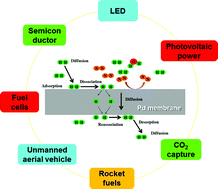Recent progress in Pd-based composite membranes
Abstract
Pd-based composite membranes have received great attention from both academia and industry as they exhibit significant potential in several important fields, such as hydrogen purification and small-scale hydrogen generation as well as CO2 capture. Thin and defect-free Pd-based membranes must have high hydrogen flux, strong thermal stability and resistance to poisoning species. This work critically reviews both the experimental and modeling studies of Pd-based composite membranes over the last few decades, particularly focusing on the critical issues of thermal and chemical stability, which are the main obstacles blocking their commercial applications.


 Please wait while we load your content...
Please wait while we load your content...